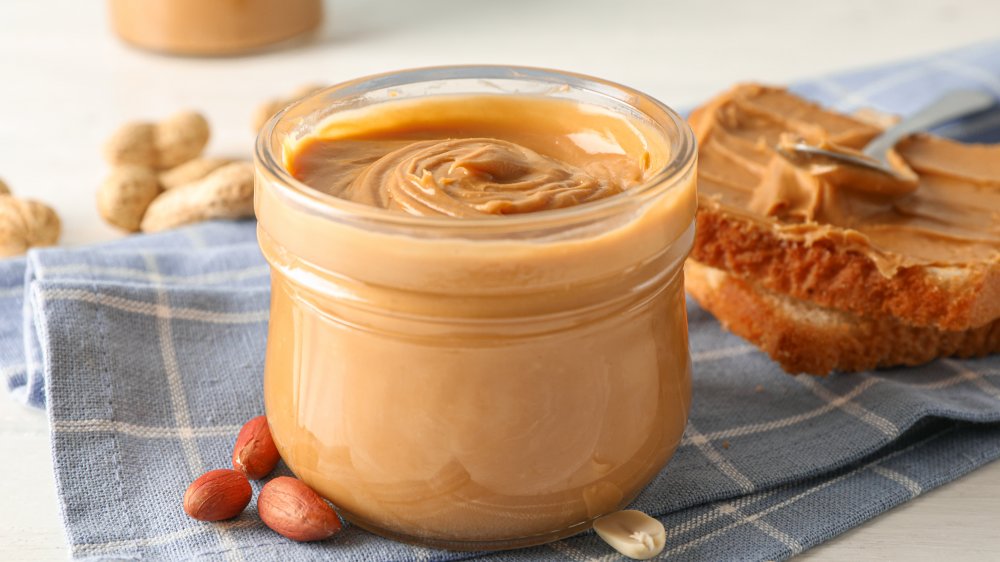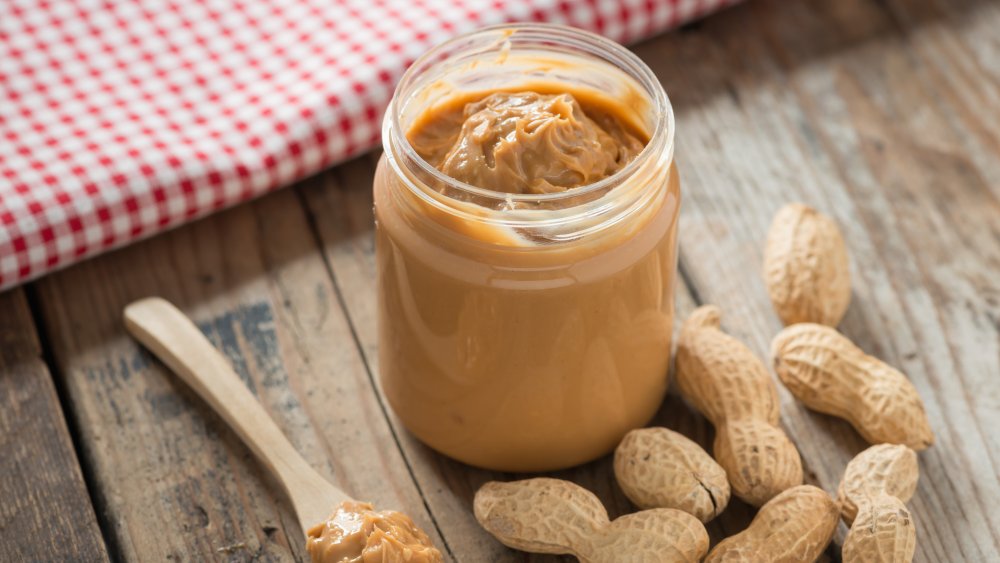The Sneaky Way Your Peanut Butter Might Be Tricking You
Peanut butter is part of the American experience. Peanut butter and jelly sandwiches gained popularity during the Great Depression and quickly became part of every kid's lunchbox for decades to follow. In fact, food historian and author Andrew F. Smith told Pacific Standard, "It's the Depression that makes the PB&J the core of childhood food." Today, Americans spend an estimated $800 million on this nut spread and collectively eat a billion pounds of peanut butter each year. Even U.S. Olympic athletes find peanut butter to be an important part of their diet as they train to go for the gold (via Business Insider).
Peanut butter is highly nutritious, providing just over 7 grams of protein in a two-tablespoon serving (via Medical News Today). It's also a high-calorie, high-fat food. However, those are healthy fats, so don't let them stop you from eating peanut butter. But with that said, you can't judge peanut butter by its jar cover, only by its label. If you look closely, you might find that your favorite peanut butter is not actually a "butter" but a "spread" (via Eat This, Not That!).
Beware of a peanut butter label with the word 'spread'
According to the U.S. Food and Drug Administration, only "10 percent of the weight" of the ingredients in peanut butter can be something other than peanuts. If the finished product contains less than 90 percent peanuts by weight, it will be called a "spread" or some other tricky marketing speak. Jif's Natural Creamy Peanut Butter Spread and Honey is a good example of this. It only contains 80 percent peanuts, so it doesn't meet the minimum threshold to be called "peanut butter."
The use of the word "natural" on the label should give you pause. The FDA has no official definition of "natural," so Jif's label doesn't run afoul of any formal criteria. But the agency has long used the term "natural" to mean "nothing artificial or synthetic." While this peanut butter spread is technically natural, it contains more than just peanuts, salt, and honey. It also contains sugar, which is the second ingredient listed, palm oil, and molasses. Vanessa Rissetto MS, RD, CDN, and co-founder of Culina Health, told Eat this! Not That! that peanut butter ingredients should be simple: "Let's look for peanuts, oil, salt — that's generally the standard that should be sufficient. We don't need sugar in our peanut butter as it is sweet enough."

